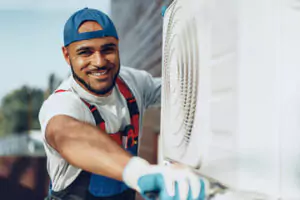Air Conditioner Installation: The Steps of Installation
The air conditioner installation is a very involved process. The air conditioner you choose must be airtight, durable, and energy-efficient. It would be best if you also had a good warranty on the air conditioner and service if any repairs are needed. AC Installation Tampa technicians can provide you with professional assistance. Once your air conditioner has been installed, you need to maintain it. Following a few simple steps, you can keep your air conditioner working properly.

Make sure the air conditioner installation team can get to your home in a timely fashion. Depending on the distance between your residence and the cooling system you chose, a few days is all it may take. Before an installation starts, it is essential to ensure your chosen contractor has chosen the correct size for your home. There is just one size that fits the specifications of the cooling system – the Manual-J load, which many contractors use. If they can’t find the Manual-J Load, call in another company.
A. When selecting air conditioners, choose the right ones for the climate you live in—ductless air conditioners cool in a straight line. Built-in air conditioners are vented and work on an intermediate level of cooling. Your contractor can explain which type is right for you and your cooling needs. In addition, they should have tested the ductless systems and can provide you with details about the price and the installation fees associated with each type.
B. If you have already selected your air conditioners and ductless units but need your air conditioner installation done right, your installer should come to your house and measure your space before the installation begins. This allows them to know the exact dimensions of your space and will allow them to know where things need to be installed and how they will be connected.
C. Air conditioners are vented and run through ductwork. Before any air conditioner installation takes place, the technician should test the ventilation in your ducts to ensure they are clear and free from leaks or obstructions that might affect the cooling. They should also run fans on the outside of the ductwork to help draw in cooler air and drive air out of the ducts as quickly as possible.
D. Most central air conditioner installation is done on a unit by unit basis, starting at the furnace core. The professional installer typically tests the power to assure proper voltage and amperage to the unit. He may also test the condition of the air vents to make sure they are adequately cleaned of build-up. A qualified electrician should be brought into the project if you are installing electric components.
E. Furnaces and compressors should always be located near the unit. Not only are technicians often nervous when working in tight spaces, but it can be dangerous. A qualified electrician is needed to work with an air conditioning system – top-rated to handle the system. If you’re having central air conditioner installation done by an amateur handyman, be very wary. The technician may be using equipment and wiring that is not of good quality or maybe illegally modified in any way.
F. Don’t forget about your HVAC contractors. These people must be adequately trained and certified by the proper authorities in their particular state. Not only will their services be valuable to your cooling system, but their work will also be contributing to lowering your carbon footprint – one of the most important benefits of air conditioner installation. They can even help reduce or eliminate the cost of installation. This is another excellent reason for choosing local professionals for air conditioner installation – you’ll get the most for your money!
